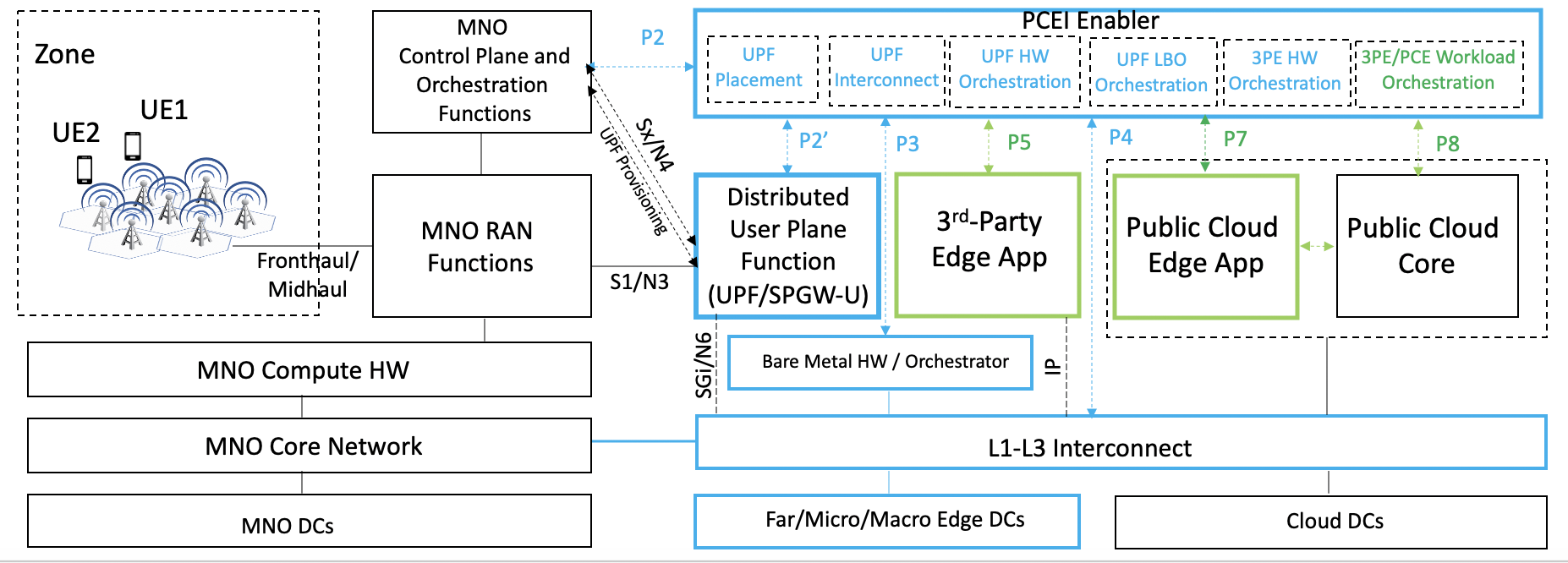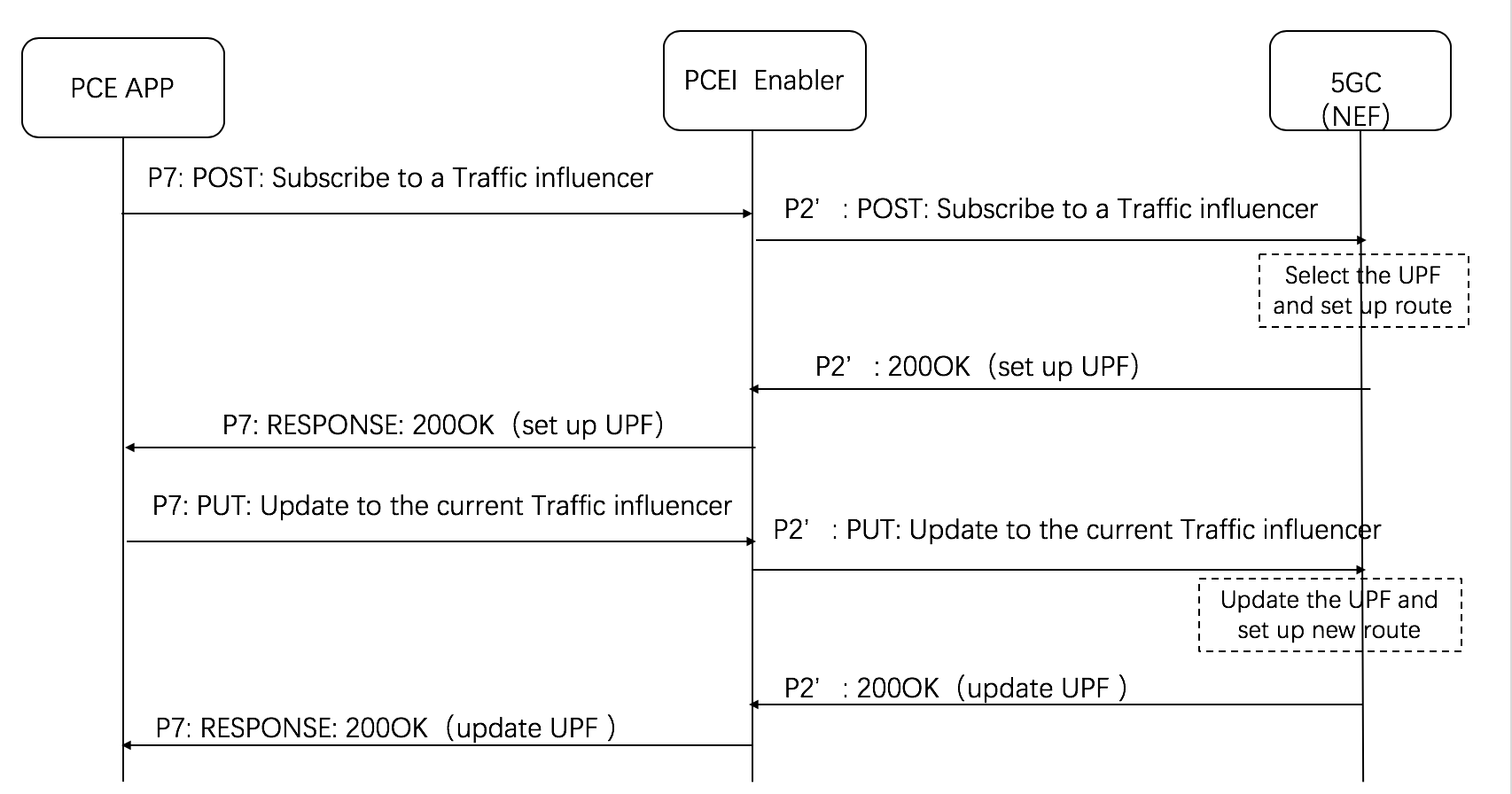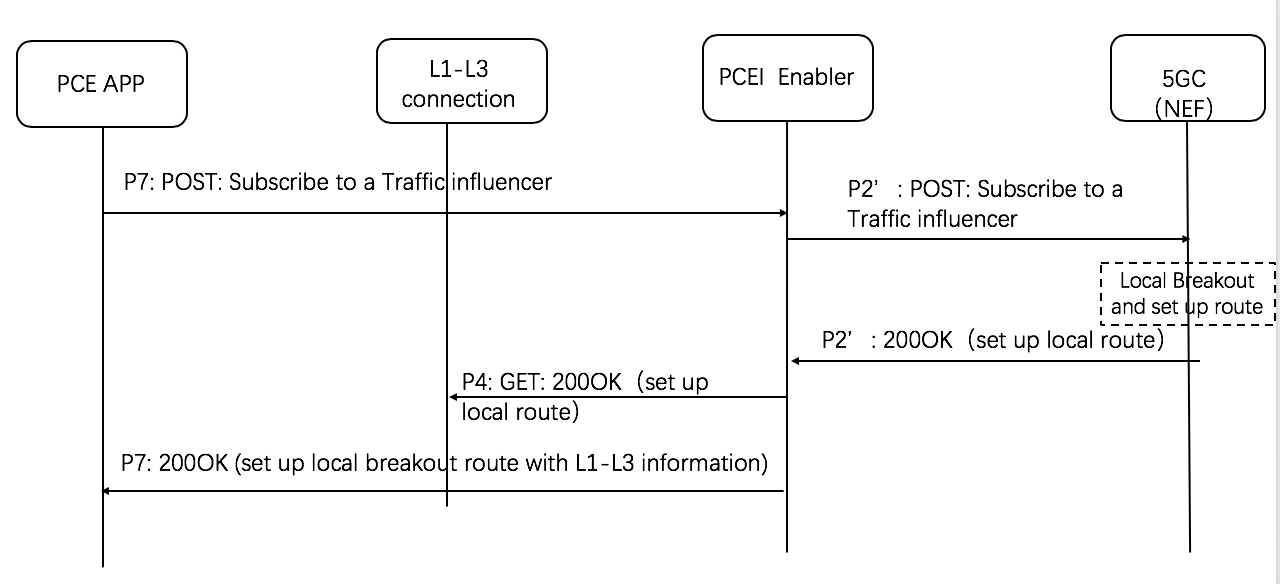...
The PCEI Intent Layer. An optional component of the PCEI Architecture responsible for providing the users of PCEI a way to express and communicate their intended functional, performance and service requirements.
...
Interface Reference Points
P1 – User Intent. Provides ability for User/Customer to specify PCEI access and functional requirements E.g. Type of Access, Performance, Connectivity, Location, Topology
...
Figure 7. UPF N6/SGi Interconnection to 3PE/PCE/PCC Scenario.
Below is an example call flow for the UPF N6/SGi interconnection:
Figure 8. PCEI Facilitated UPF Interconnection on N6/SGi Call Flow.
UPF Placement Scenario
Assumptions:
- MNO supports CUPS (5G NSA) and/or UPF (5G SA).
- MNO may request UPF Placement / Metro, and 3PE/PCE Access / Metro, via APIs (on P2)
- Bare Metal Orchestration Provider and Interconnect Provider expose Data Center Location / Metro to PCEI Enabler via APIs (on P3 and P4)
- 3PE and PCE providers expose Data Center Location / Metro to PCEI Enabler via APIs (on P5 and P8/P7)
- PCEI Enabler may request Bare Metal Orchestration for Distributed UPF via APIs (on P3)
- PCEI Enabler may request Bare Metal Orchestration for 3PE via APIs (on P3)
- PCEI Enabler may request Interconnect for Distributed UPF N3/S1 and N6/SGi traffic (L2/L3) via APIs (on P4)
- PCEI Enabler may expose UPF management access to MNO
- MNO may provision the Distributed UPF over management access
- PCEI Enabler may provision UPF connectivity and LBO configuration (based on the UPF provisioning model) over P2’ using appropriate protocols
- PCEI Enabler may request PCC/PCE and/or 3PE Controller to instantiate workload instances for LBO processing via APIs (on P8/P5)
Figure 89. UPF Distribution/Placement and N3/S1 Interconnection to MNO, N6/SGi Interconnection to 3PE/PCE/PCC Scenario.
...
Figure 9. User Plane Function Distribution and Traffic Local Break-Out.
UPF Distribution:(According Distribution:PCEI Facilitated Local-Break Out Orchestration(According to the procedure of 3GPP TS 29.522, public cloud application subscribe to NEF to set up the traffic route)
Figure 10. PCEI Facilitated Local Break-Out call flow.
the body of the HTTP POST message may include the AF Service Identifier, external Group Identifier, external Identifier, any UE Indication, the UE IP address, GPSI, DNN, S-NSSAI, Application Identifier or traffic filtering information, Subscribed Event, Notification destination address, a list of geographic zone identifier(s), AF Transaction Identifier, a list of DNAI(s), routing profile ID(s) or N6 traffic routing information, Indication of application relocation possibility, type of notifications, Temporal, spatial validity conditions, and if the URLLC feature is supported, Indication of AF acknowledgement to be expected and/or Indication of UE IP address preservation.
Local Breakout Orchestration with L1-L3 Interconnection coordination:
Figure 11. PCEI Facilitated Local Break-Out with L1-L3 Interconnection Coordination call flow.
Location Services (LS)
This use case targets obtaining geographic location of a specific UE provided by the 4G/5G network, identification of UEs within a geographical area as well as facilitation of server-side application workload distribution based on UE and infrastructure resource location.
...


